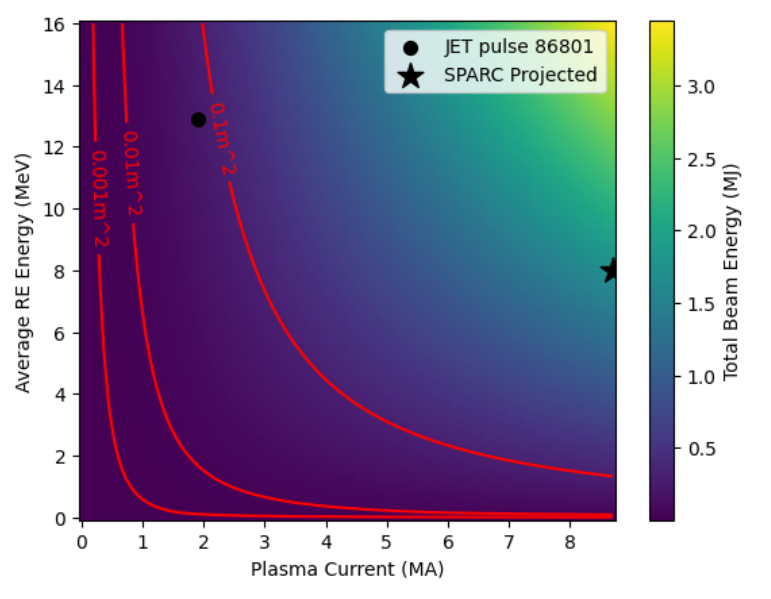
Runaway electrons in tokamaks are electrons which are traveling fast enough to no longer experience drag force from collisions and are accelerated to relativistic speeds. This can happen at any time during tokamak operation, but is especially likely during current quench disruptions when fast current drops cause large voltages. In certain cases, up to 100% of the plasma current can be transferred into these relativistic electrons, and they can carry up to around 100 MeV of energy. Runaway electrons pose problems for tokamaks due to the large amounts of energy they can carry and deposit into walls when they are deconfined. In addition, the highest energy electrons can potentially pass through walls and cause issues in magnets and other structures within the tokamak. There are many documented cases of runaway electrons causing wall melting in several different tokamak experiments.
During operation SPARC will have a current of up to 8.7 MA. This means that potential runaway electron beams can carry a lot of current and energy, and potentially cause damage to the walls. The goal of this project is to quantify the potential damage of runaway electron strikes through both simulation and experiment. This involves looking through past cases of runaway electron damage, simulation of heat loads and melt formations, and projections onto the operational scenarios in SPARC.
This project is led by graduate student Abby Feyrer, who is advised by Alex Tinguely and John Rice with collaboration from Ryan Sweeney at Commonwealth Fusion Systems (CFS).